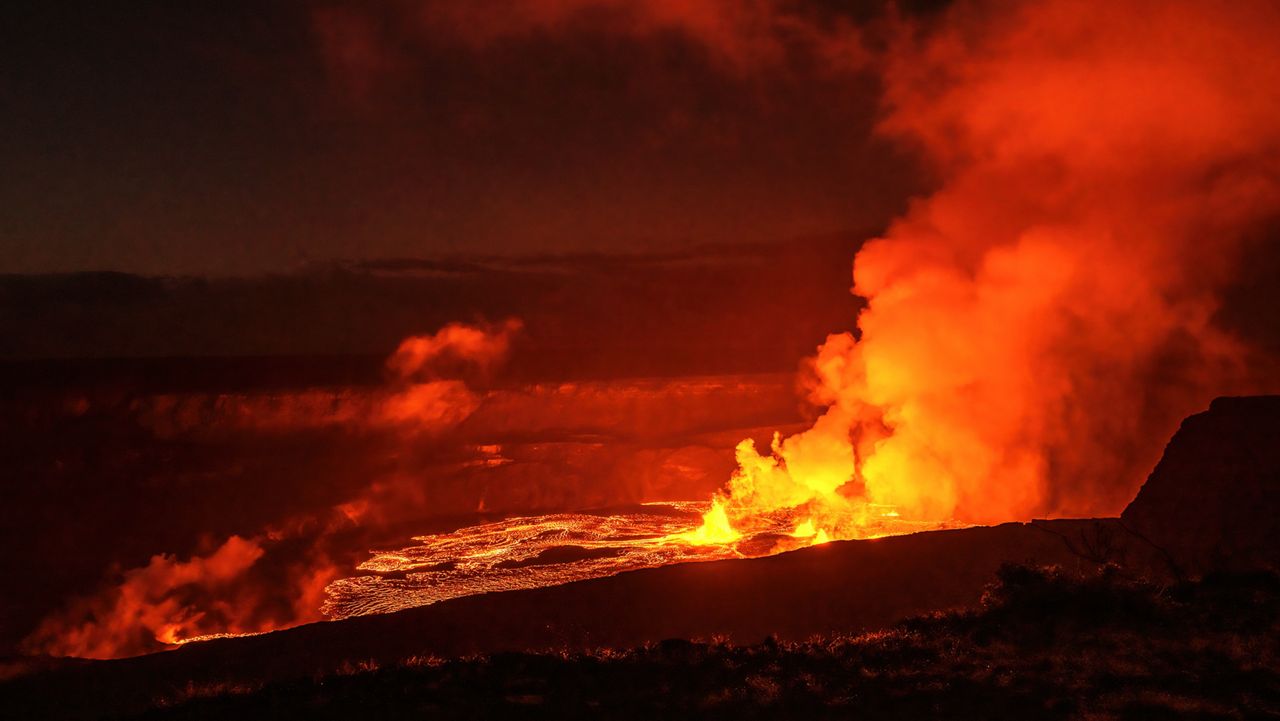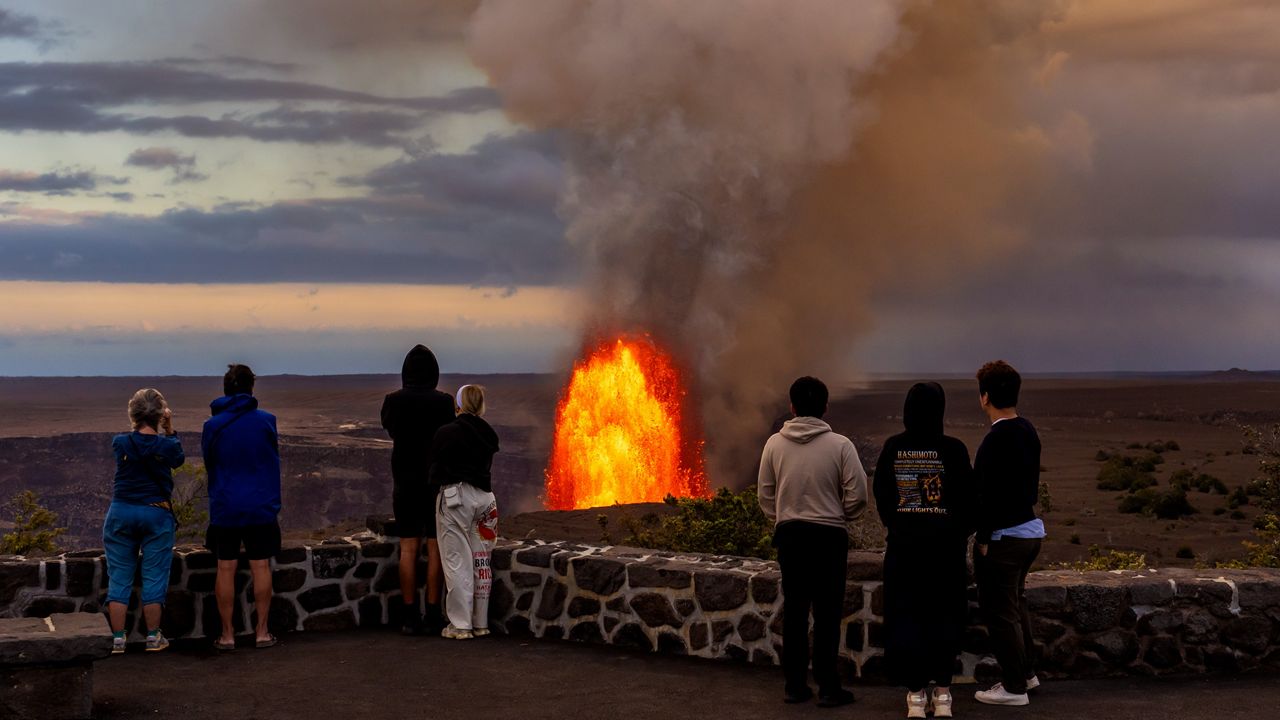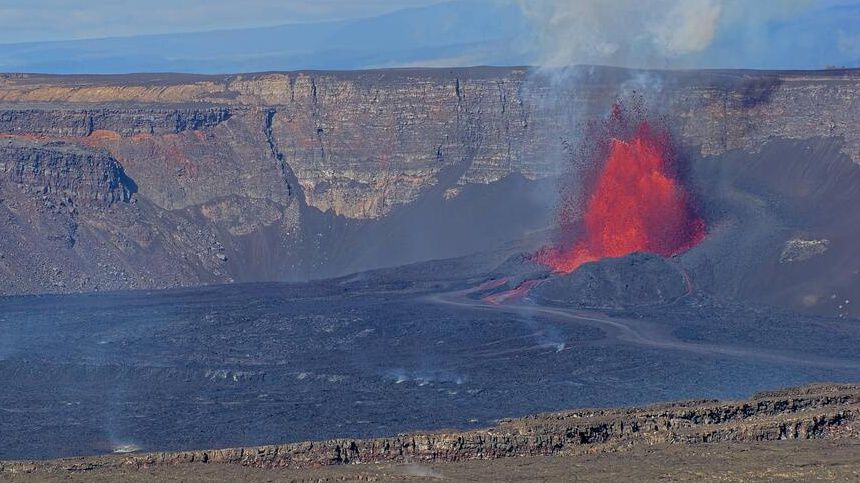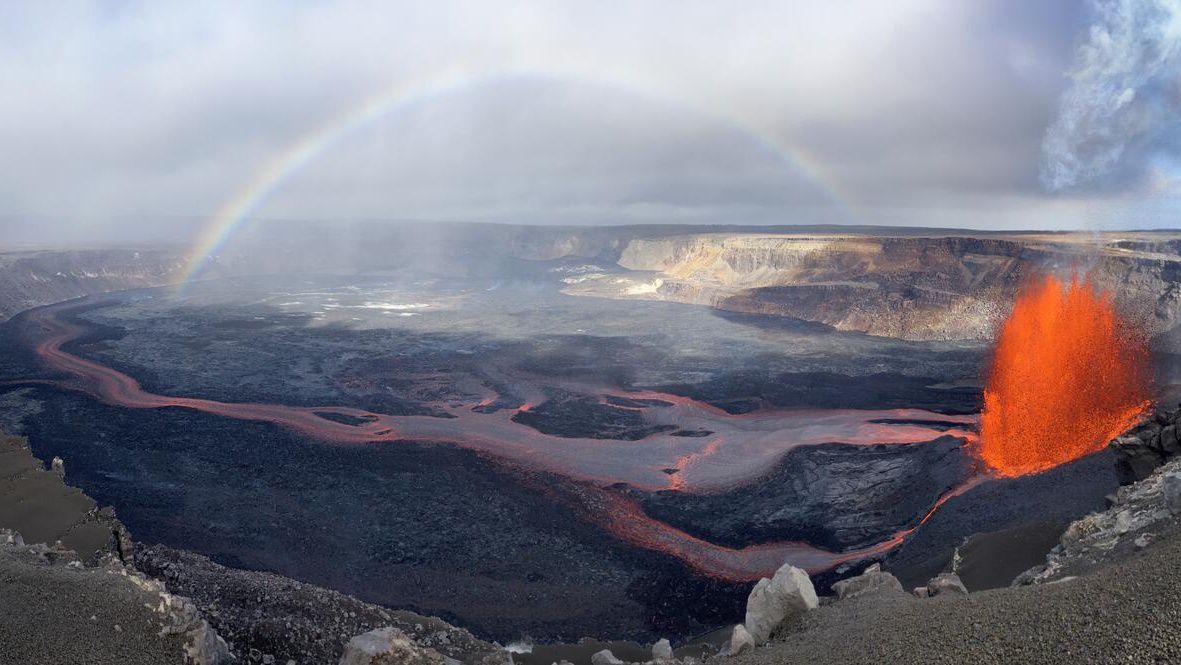HAWAII VOLCANOES NATIONAL PARK, Hawaii — Since Oct. 4, the Hawaiian Volcano Observatory has reported elevated activity at Kilauea’s summit. However, the volcano is not erupting at this time.
On Monday, the HVO reported that over a 24-hour period, the south-southwest area of Kilauea’s summit experienced elevated unrest. Seismic stations across the island observed tremors on Monday between 2:20 p.m. to 3 p.m. with the strongest at Kilauea’s summit.
According to the HVO, elevated unrest at Kilauea may continue to increase and decrease as magma moves beneath the summit. Kilauea’s summit remains at a high level of inflation and an eruption may begin with little or no warning. However, HVO said it is impossible to say for sure if an eruption will start.
The HVO detailed three possible scenarios. First, magma may continue to accumulate in the south-southwest region of Kilauea’s summit, but eventually stop with no eruption. Second, an eventual eruption could occur inside the caldera. Third, an eventual eruption could occur outside of the caldera, to the south or southwest.
Kilauea is arguably the world’s most active volcano. According to the U.S. Geological Survey, the caldera saw nearly continuous activity during the 19th century and early part of the 20th century. Since 1952, Kilauea has erupted dozens of times. From 1983 to 2018, the volcano was active along the East Rift Zone.
Starting in 2020, Kilauea has had several summit eruptions. This year, Kilauea erupted from January until March. Kilauea erupted again for several weeks in June, with fountains of lava reaching heights of 200 feet. Another eruption started on Sept. 10 and ended on Sept. 16.
In response to the recent activity at Kilauea summit, Hawaii Volcanoes National Park has closed the Mauna Iki Trail and part of the Kau Desert/Footprints Trail. Hilina Pali Road is closed to vehicles past the Kulanaokuaiki Campground to the Hilina Pali Lookout due to elevated fire risk.
“Safety is always our top priority, and the potential hazards in this region are significant and could include elevated volcanic gases, dangerous lava activity, and damaging earthquakes with very little notice. After any potential eruptive activity occurs, park managers will re-evaluate high hazard areas and access,” said Hawaii Volcanoes National Park Superintendent Rhonda Loh in a news release.
Michelle Broder Van Dyke covers the Hawaiian Islands for Spectrum News Hawaii. Email her at michelle.brodervandyke@charter.com.









